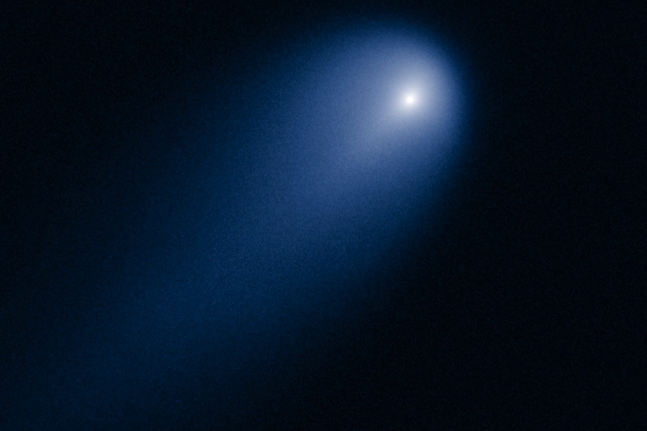Sungrazing Comet ISON Comes to Town on Thanksgiving

On Thanksgiving Day, November 28, Comet ISON will round the sun and soon after it may be visible in the predawn sky.
ISON is called a sungrazing comet because of how close to the sun it will be when it passes though—just 730,000 miles away from the sun.
“As Thanksgiving rapidly approaches, I am hoping many of you will take a moment to step outside and gaze up at the predawn sky starting next weekend,” Southampton High School astronomy teacher Ryan Munkwitz says in a school bulletin. “[ISON] left the Oort cloud at least a million years ago and is expected to make many headlines during December after finally reaching the Sun. Some news articles are being so bold as to label ISON as the ‘Comet of the Century.'”
Munkwitz says the comet is expected to have “an incredible tail” if it survives its journey past the sun and it will be visible during predawn in December through January. Though, he acknowledges, “If it does not survive, it may break apart and fail to meet all the hype.”
“This is ISON’s first trip around the Sun, so it is pristine with elements from the early Solar System,” he continues. “Studying the gases that boil off will give us clues about the days when Earth was still being born. Even if the sun-grazer doesn’t meet expectation, it may provide just one more reason to appreciate our short tenure on this blue marble.”
Munkwitz also offers these facts:
•It’s name is for the International Scientific Optical Network (ISON), a group of 10 countries organized to monitor and track objects in space. Managed by a Russian academy.
•It’s a little smaller than Southampton, 3-4 miles across
•Traveling ~48,000 miles per hour (meaning it would travel around Earth ~twice an hour, much faster than ISS)
•Shedding 112,000 pounds/minute and rising



